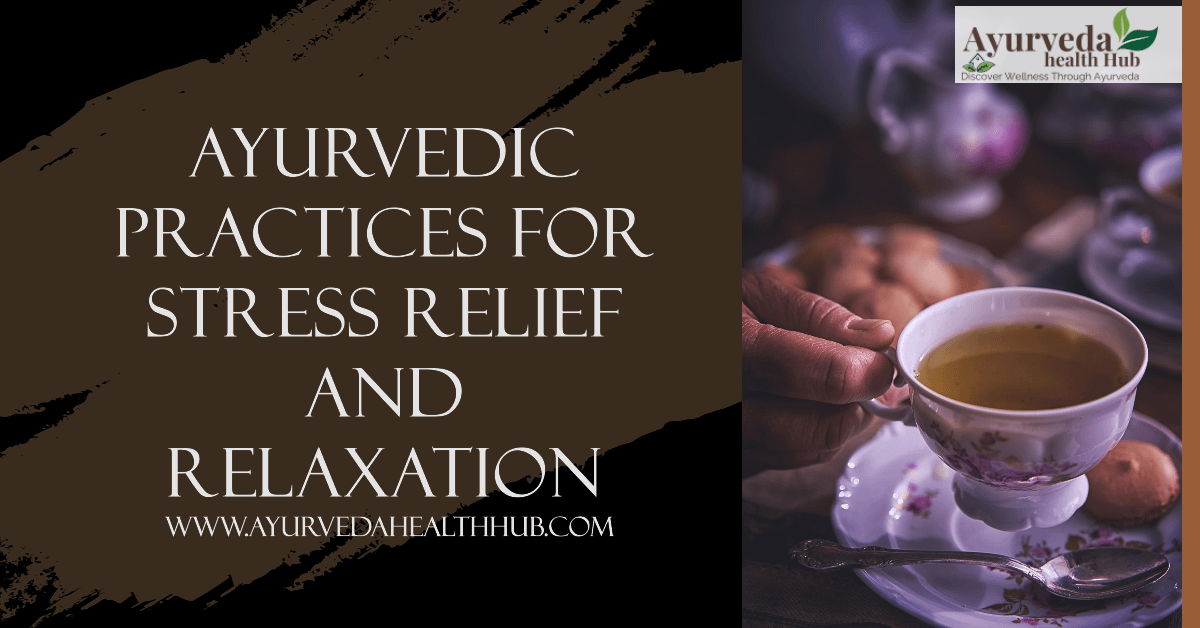Ayurvedic Stress Relief: Practices for Relaxation
In today’s fast-paced world, stress has become a common companion in our daily lives. Whether it’s deadlines at work, family responsibilities, or the constant buzz of technology, it can often feel overwhelming. Fortunately, Ayurvedic stress relief offers holistic practices that can help restore balance and tranquility to your life. Rooted in ancient Indian wisdom, Ayurveda emphasizes harmony between the body, mind, and spirit, providing a path toward relaxation and well-being.
Understanding Ayurvedic Stress Relief
Ayurvedic stress relief focuses on identifying and addressing the root causes of stress rather than just treating the symptoms. According to Ayurveda, each individual has a unique constitution, or prakriti, which influences how they experience stress. By understanding your dosha (body type) and its characteristics, you can tailor your stress relief practices to meet your specific needs.
The Three Doshas
- Vata: Associated with air and space, Vata individuals may experience stress through anxiety and restlessness. They benefit from grounding practices.
- Pitta: Governed by fire and water, Pitta individuals often face stress due to overwork or competition. They should focus on cooling and calming techniques.
- Kapha: Linked to earth and water, Kapha individuals may experience lethargy and emotional heaviness. They thrive with invigorating practices.
Understanding your dosha can help you choose the most effective Ayurvedic stress relief strategies.
Ayurvedic Practices for Stress Relief
1. Meditation and Mindfulness
Meditation is a powerful tool for Ayurvedic stress relief. It promotes mental clarity and emotional stability. Here’s how to get started:
- Find a Quiet Space: Choose a comfortable spot where you can sit without distractions.
- Focus on Your Breath: Close your eyes and take deep, slow breaths. Inhale for a count of four, hold for four, and exhale for six.
- Practice Regularly: Aim for at least 10-15 minutes daily. Consistency is key to experiencing benefits.
2. Herbal Remedies
Ayurveda utilizes various herbs to help manage stress. Some effective options include:
- Ashwagandha: This adaptogenic herb helps combat stress and fatigue.
- Brahmi: Known for enhancing cognitive function, Brahmi can improve focus and clarity.
- Tulsi (Holy Basil): Revered for its calming properties, Tulsi can reduce anxiety and promote a sense of peace.
Consult with a qualified herbalist or Ayurvedic practitioner to find the right remedies for you.
3. Yoga and Physical Activity
Engaging in yoga can significantly contribute to Ayurvedic stress relief. Yoga combines physical movement, breath control, and meditation, creating a comprehensive approach to relaxation.
- Hatha Yoga: focuses on gentle poses and stretches that promote relaxation.
- Restorative Yoga: Uses props to support the body in gentle postures, allowing for deep relaxation.
Aim to practice yoga for at least 30 minutes, two to three times a week.
4. Abhyanga (Self-Massage)
Abhyanga, or self-massage with warm oil, is a cornerstone of Ayurvedic wellness. This practice not only nurtures the skin but also calms the nervous system.
- Choose an Oil: Sesame oil is commonly used for its warming properties, while coconut oil is excellent for soothing.
- Technique: Warm the oil and massage it into your skin in circular motions, focusing on areas where you hold tension.
- Frequency: Incorporate Abhyanga into your weekly routine, ideally before a shower or bath.
5. Balanced Diet
Food plays a significant role in Ayurvedic stress relief. Eating a balanced diet that aligns with your dosha can help maintain emotional balance.
- Vata: Warm, moist foods like soups and stews can help ground Vata.
- Pitta: Cooling foods like cucumbers and mint can soothe Pitta.
- Kapha: Light, spicy foods such as legumes and leafy greens can energize Kapha.
Conclusion
Incorporating Ayurvedic stress relief practices into your daily routine can significantly improve your overall well-being. By understanding your unique constitution and adopting these holistic techniques, you can cultivate a sense of peace and balance in your life. Start small—choose one or two practices that resonate with you and gradually integrate them into your routine.
FAQs
Q1: How long does it take to see results from Ayurvedic stress relief?
A1: Results can vary, but many individuals notice improvements within a few weeks of consistent practice.
Q2: Can anyone practice these Ayurvedic techniques?
A2: Yes, Ayurvedic practices are suitable for everyone, but it’s best to consult with a practitioner for personalized guidance.
Q3: Are there any dietary restrictions in Ayurveda? ?
A3: Ayurveda emphasizes balance, so it’s important to choose foods that align with your dosha and promote overall wellness.
For further insights, check out our articles on Ayurvedic Herbs for Relaxation and Meditation Techniques for Beginners. Explore more about The Benefits of Yoga in Ayurveda to deepen your understanding.
External Resources
Take the first step toward a more relaxed and balanced life today!




